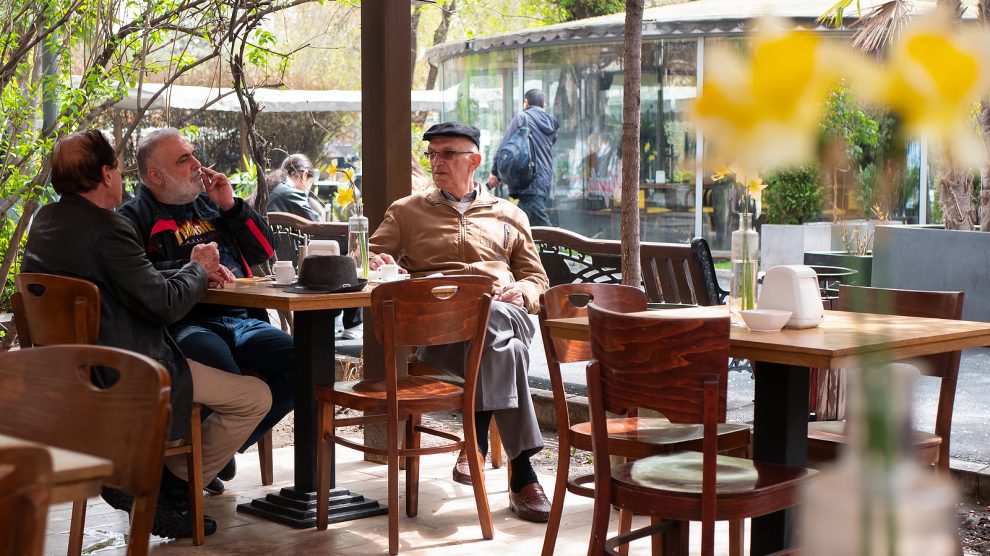Despite fears of a new war with neighbouring Azerbaijan, Armenia’s economy has performed remarkably well over the past year, with an influx of Russian migrants helping to drive exceptional growth.
Home to 2.9 million people and nestled in the South Caucasus, Armenia has long benefitted from remittances from its large diaspora while suffering from geopolitical precarity.
Devastated by a 1988 earthquake which destroyed 90 per cent of Spitak and half of Armenia’s second-largest city, Gyumri (at the time still known as Leninakan), Armenia then suffered further damage during the First Karabakh War with its neighbour Azerbaijan.
- Armenia, Georgia, and Tajikistan remain the top growth performers in CEE and Central Asia
- Armenia, Azerbaijan clash again
- Let down by Moscow, Armenia looks to the West
Today, Armenia is a member of the Eurasian Economic Union and Russia-led Collective Security Treaty Organisation (CSTO)—although its ties with Moscow have been increasingly strained after the CSTO failed to come to its defence amid clashes with Azerbaijan in 2022 and Russian peacekeepers failed to act against an Azerbaijani blockade on Armenians in Nagorno-Karabakh.
Armenia struggles to balance favourable economic and political relations with its southern neighbour, Iran, and Western nations home to large Armenian diasporas such as France and the United States. The risk of further conflict with Azerbaijan over territory in southern Armenia, coveted by Baku as a land-bridge to its exclave of Nakhchivan, remains high.
In addition, Armenia has is currently grappling with the arrival of over 100,000 displaced Armenians from Nagorno-Karabakh, posing a significant challenge for the nation.
Resilience to external shocks
Other geopolitical developments—namely the war in Ukraine—have proven more beneficial. Western sanctions on Russia and the mobilisation of many Russians to fight in Ukraine created a mass influx of Russians into the South Caucasus, with many settling in Tbilisi and Yerevan.
Newly-arrived Russians brought capital and drove increases in consumption and services that in turn pushed gross domestic product (GDP) growth to a whopping 12.6 per cent in 2022. Inflows of money transfers increased reserve levels and reduced credit dollarisation.
This positive momentum continued into the first half of 2023, with a double-digit GDP growth rate of 10.5 per cent (year-on-year) in real terms. As in 2022, the services sector, particularly in IT, trade, and transportation, played a significant role in driving this growth.
Increased inflation—8.6 per cent in 2022, up from 7.2 per cent in 2021—was mediated by active inflation targeting, and the country has been praised by the World Bank for its adherence to prudent fiscal policy, and sound financial sector oversight. The World Bank and Asian Development Bank have also praised Armenia’s recent transparency and anti-corruption reforms.
“Recent economic shocks such as the Covid-19 pandemic interrupted Armenia’s growth momentum, but the country has demonstrated a remarkable commitment to reforms that has allowed it to keep sustainable debt levels and macroeconomic management credibility,” said the Asian Development Bank’s director-general for Central and West Asia, Yevgeniy Zhukov.
Nonetheless, low investment rates, weak attraction of foreign direct investment, limited human capital, insufficient diversification, and a narrow export base are serious structural challenges that limit the economy’s productivity.
Constructing growth
One of Armenia’s strongest sectors is its construction industry, which played a major role rebuilding cities after the Spitak quake.
In 2005, the annual growth of the sector was about 40 per cent—significantly contributing overall GDP growth of 13.9 per cent that year. Construction accounted for 30 per cent of Armenia’s economy in 2009, but construction volumes fell that year by 37.4 per cent as what former Armenian prime minister Tigran Sargsyan termed a “construction bubble” burst.
The sector then declined for a decade but has begun to grow again.
Today, the outskirts of Yerevan are filled with new apartment buildings, and construction accounted for 7.2 per cent of GDP in 2022—which, while much lower than its share in 2009, is still the eighth largest national construction sector in Europe and Central Asia. In line with increases in public and private investment, construction expanded in 2022 by about sixfold to 18.8 per cent.
Armenia’s construction sector is projected to grow at 17.6 per cent in 2023 before decreasing to 12.9 per cent growth in 2024. Increased government expenditure—including planned large public investments in the country’s north-south road—will drive this growth.
However, overall GDP growth is expected to decrease from 2022’s exceptional rate to a still robust but less anomalous 6.5 per cent in 2023 and 5.5 per cent in 2024—still driven largely by growth in services. Lower growth, monetary tightening, and a smaller budget deficit will contribute to a decline in average inflation to seven per cent for 2023.
“Uranium is found in granite rocks, and it is extracted in granite mines by block leaching, which significantly increases the cost of the extracted products. In other countries, uranium is found in soft soils, and it is mined using the less expensive method of underground leaching.”
Unlike many news and information platforms, Emerging Europe is free to read, and always will be. There is no paywall here. We are independent, not affiliated with nor representing any political party or business organisation. We want the very best for emerging Europe, nothing more, nothing less. Your support will help us continue to spread the word about this amazing region.
You can contribute here. Thank you.







Add Comment